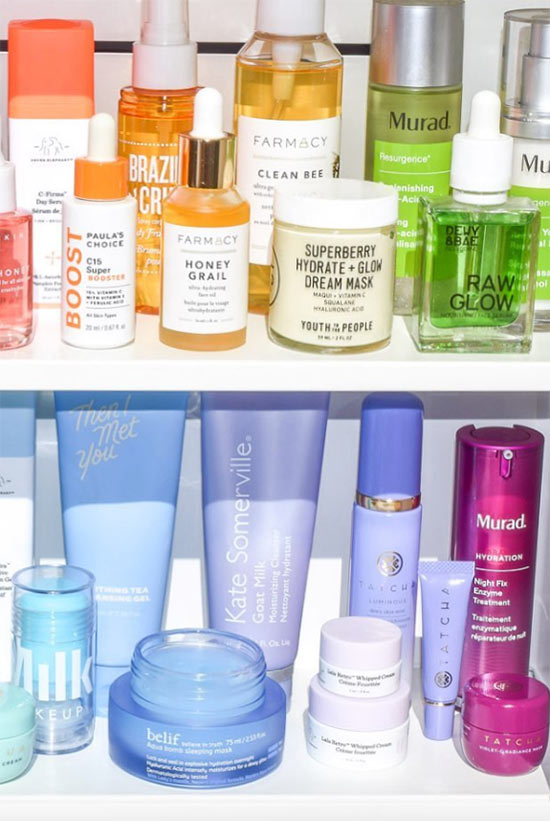Tranexamic acid is the up and coming skincare ingredient that you’re going to see in all of your brightening products very soon. This ingredient joins the ranks of vitamin C and alpha-arbutin as one of the most effective counters to hyperpigmentation of all sorts, including sun spots, dark marks, post-acne scars, and melasma.
No matter the reason for your hyperpigmentation, or even if you just need a brightening pick-me-up, tranexamic acid is worth checking out! The research around it is extremely promising, with each new study released showing more and more potential beauty uses.
In this article, we explain exactly what tranexamic acid for skin is and how it can improve the look of the skin. I compare its effects to other common skin-brightening ingredients like hydroquinone and vitamin C, and finish off with a quick explanation on how you should add it to your routine!
In this article:
- What Is Tranexamic Acid?
- Tranexamic Acid Skin Benefits
- Tranexamic Acid vs. Vitamin C and Other Skin Brighteners
- How to Use Tranexamic Acid in Skincare
What Is Tranexamic Acid?
Tranexamic acid is a derivative of the amino acid lysine that is produced synthetically in a lab. Its main use is as an oral medication that prevents blood loss in all kinds of situations, including menstruation, postpartum bleeding, or shortly after a severe injury. It is sometimes given to hemophiliacs before dental surgeries in order to prevent complications.
As with many other medications that find cosmetic use, clinicians discovered that tranexamic acid had a secondary effect as a pigmentation inhibitor, and it has been used as a melasma treatment in Japan for many years.
Tranexamic Acid Skin Benefits
Tranexamic acid works to brighten the skin through a complex process that involves different enzymes and receptors in the body. As a result of this process, it interferes with the production process of melanin, which is the dark pigment in the skin. It prevents melanin from being formed in the first place and also blocks formed melanin from finding its way into the skin cells.
Over time, it seems to be effective both as a preventative and a reversing agent for hyperpigmentation. While most studies have been conducted on melasma, many users have experimented with it for other types of hyperpigmentation and have found that it is very useful!
Tranexamic acid is also known to have anti-inflammatory effects, although it hasn’t been studied as a topical or in relation to the skin. With that said, many users with rosacea note that adding tranexamic acid products to their skincare routine helps with alleviating symptoms like bumps and redness, which is likely dues to its anti-inflammatory effect.
Tranexamic Acid vs. Vitamin C and Other Skin Brighteners
Okay, so we know tranexamic acid has skin-brightening effects, but how does it actually compare to all the other buzz-inducing ingredients? The answer is, pretty favorably.
While studies on tranexamic acid as a topical skin brightener are still fairly scarce, at the moment, it seems like this wonderful acid is just as effective as other popular skin-brightening ingredients like hydroquinone, vitamin C, kojic acid, licorice root extract, niacinamide, and alpha-arbutin.
Hydroquinone is considered the standard treatment for hyperpigmentation, but it’s also a serious medication that can have side effects, so it has been losing popularity in recent years, with many searching for alternatives to it.
In a study on melasma done in Iran, a solution of 3% tranexamic acid was shown to be as effective as a solution of 3% hydroquinone + 0.01% dexamethasone as lightening the pigmentation.
Vitamin C in its strongest form, L-ascorbic acid (abbreviated to LAA) is the most popular ingredient for targeting hyperpigmentation, and it also has some remarkable anti-aging benefits as an antioxidant and collagen-booster. There hasn’t been a lot of research comparing the two ingredients, but we were able to find one study (that also included microneedling) that did suggest that tranexamic acid was more effective than vitamin C at lightening pigmentation.
If your skin is resilient, and you want quick results, you don’t have to dump your vitamin C serum and switch to tranexamic acid! It seems as though combining the two therapies gives faster results than just using one. If your skin doesn’t respond well to LAA, you can try combining a product with tranexamic acid with products that contain gentler forms of vitamin C, or with skincare products that contain other gentle skin brighteners.

How to Use Tranexamic Acid in Skincare
As with many other active ingredients, tranexamic acid is best used in leave-on formulations like serums and lotions. With a cleanser, it’d get washed off of the skin far too quickly to make a difference.
Since this ingredient is relatively new, we don’t know exactly how likely it is to irritate or cause sensitivity, so it’s important to patch test it on your forearm or neck for a few days before applying directly to the face.
Tranexamic acid can be used both at night and in the daytime, although sometimes it’s formulated in a format or with other ingredients that are better in the evening. Usually, the directions on the product you purchase will mention if you cannot use it in the daytime.

If your tranexamic acid comes in the forum of a serum, it is best to apply it after cleansing and toning, but before moisturizing. If you use toners or serums with pH-dependent ingredients like vitamin C, BHA, or AHA, you will want to use those first and then apply the serum or lotion with tranexamic acid afterward.
Since tranexamic acid is used especially to target hyperpigmentation, it’s very important that you wear sunscreen in the daytime. Exposure to UVA and UVB rays makes all kinds of hyperpigmentation worse, so it doesn’t make sense to use a product that treats it without also preventing it from worsening.
Photos via @dazzlensparkle, Instagram





